Their place in the sun
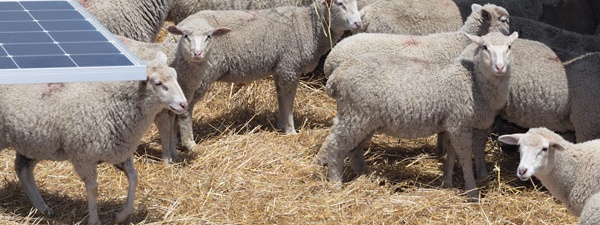
September/October 2023 California Bountiful magazine
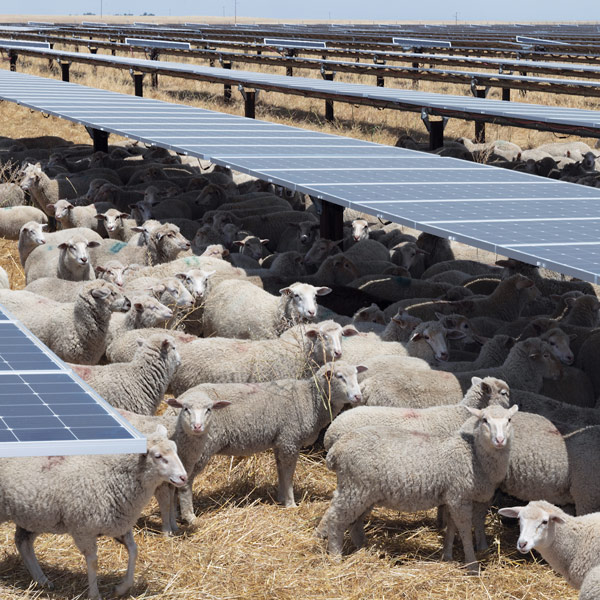
Grazing sheep provide myriad benefits at large solar projects
Story by Ching Lee
Photos by Richard Green
With its abundant sunshine, it’s no surprise the Golden State leads the nation in solar power, which generates more than 26% of the state’s electricity.
California will continue to follow the sun for good reason. It has a goal to achieve 100% clean energy by 2045, with solar being a key component of its renewable energy portfolio. That means outfitting more rooftops and open spaces with panels that can harness the sun’s rays.
But locating utility-scale solar projects in rural communities remains controversial because it takes land out of agricultural production. Now, some of this land has returned to producing food and fiber with the help of sheep ranchers such as Ryan Indart, who runs Indart Solar Sheep Grazing in Fresno County.
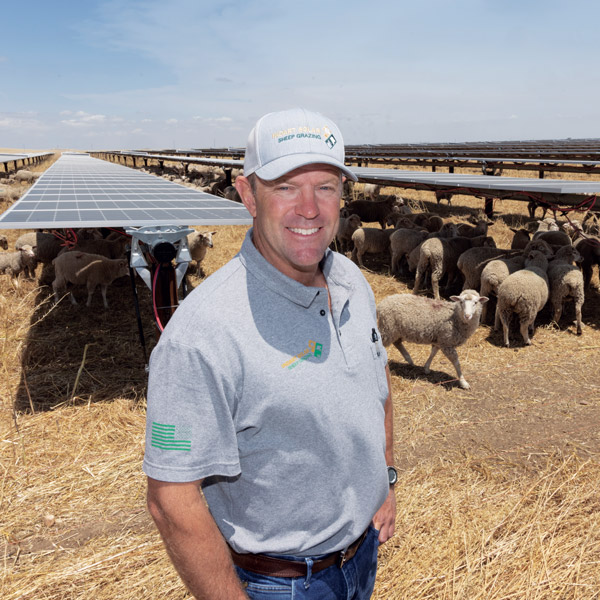
Experts in vegetation management
Looking out at what he describes as a “massive solar project” covering thousands of acres in the San Joaquin Valley, Indart acknowledges he would “rather see this land produce garlic, onions, tomatoes—you name it.”
“But I’m not in charge of policy,” he says, “so I’m not going to sit here and pound my chest and be all mad. I’m going to adapt.”
By using his sheep to gobble up the grasses underneath the solar panels, Indart helps his clients mitigate potential fire hazards and protect their multimillion-dollar investments in infrastructure and equipment. At the same time, he’s able to feed his flocks, which get to dine on “some of the best native vegetation in the world” and then go on to produce meat and wool.
After this year’s wet winter and spring, weeds and other invasive plants around solar sites have exploded, he says, and his lambs are becoming big and healthy grazing the properties.
“There’s a real need out there” to manage vegetation, he says. “We’re filling that need.”
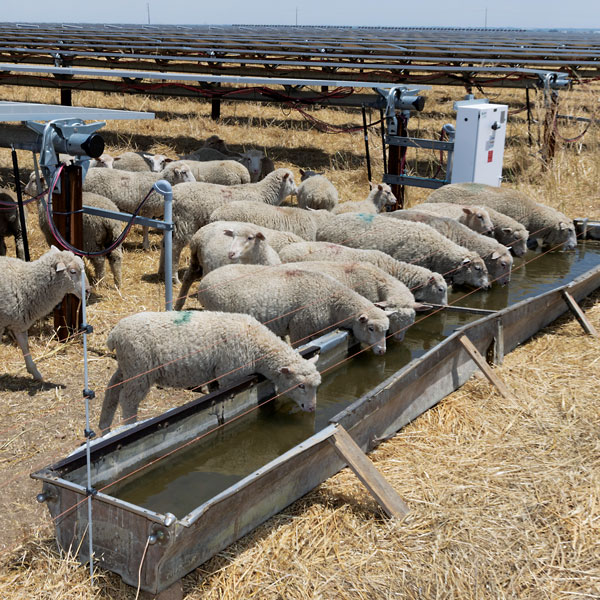
‘An epiphany moment’
It wasn’t always this way. Before embarking on his first solar grazing project in 2018, Indart says he experienced “some of the most challenging professional years I’ve ever had” starting in 2009. Impacts from drought, tough market conditions and the cost of doing business in California made for “extremely difficult” years, especially from 2012 to 2016, when he was forced to sell some of his prized breeding ewes just to pay the bills.
Indart says he “came really close” to moving his business to Wyoming when he received a call from a solar developer who said he wanted to put sheep on a project in western Fresno County to manage vegetation—and was willing to pay him for it.
“It was just an epiphany moment,” he says. “I thought, wow, this could be a game changer.”
Even though Indart had never heard of solar grazing, he says he was open to the idea and was “willing to try new things.” Plus, 2018—the year he received the business proposition—“was probably our most difficult year because the drought was the worst we had ever seen.” Lack of rain decimated pastures, with livestock ranchers across the state scrambling to find enough feed for their animals.
After accepting that first solar project, Indart says he decided to “go all in” on solar grazing, cold-calling companies to gain new clients and build his business. He targets “massive utility-scale projects” that are oftentimes 1,000 to 2,000 acres, he says, “because I can make more money grazing more acres.”
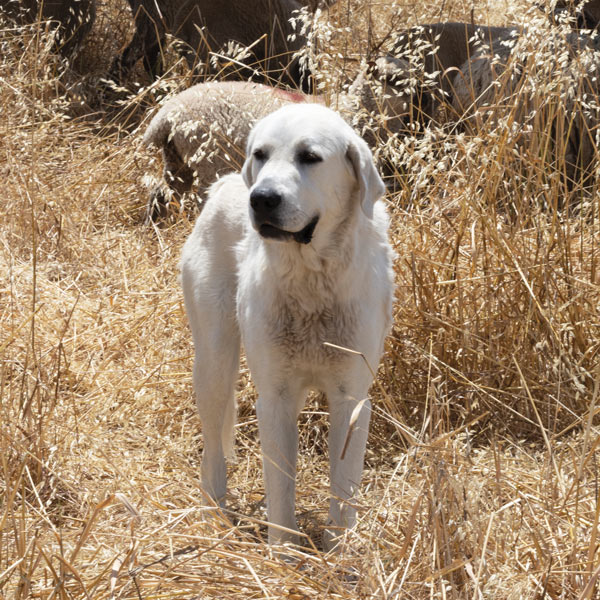
No goats allowed
Because Indart specializes in solar projects, he’s different from other grazing operations that may use a combination of sheep and goats to manage weeds in different settings and property sizes. Indart uses only sheep, which are best suited for solar installations due to their size and grazing behavior. Goats are browsers, he says, and will chew on wires.
Indart now grazes nearly 20,000 acres—mainly in California but also Arizona and more recently Colorado. There’s plenty of room to grow—and to graze—with some 2,380 solar companies operating in the state as of 2022, according to the Solar Energy Industries Association. Most of the growth last year was in residential and utility-scale projects. The state’s $90.6 billion solar market now produces enough energy to power more than 11 million homes, the association says.
Though some solar companies still use herbicides and mowers to manage vegetation, Indart says sheep grazing is growing in popularity because it costs less. Plus, “we are the environmentally friendly option” compared to spraying and mowing, the latter of which uses fossil fuels, he says, and solar companies are “starting to see the benefits.”
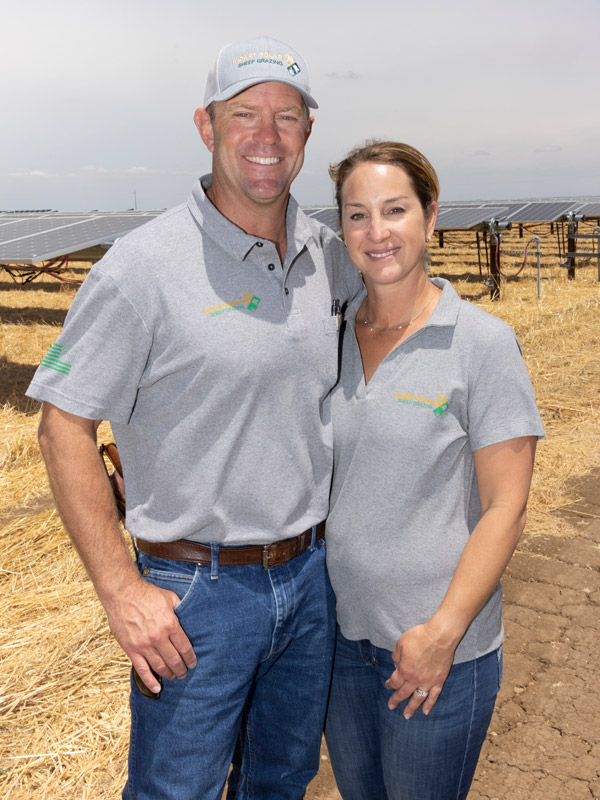
Sheep ranching heritage
Being part of the renewable energy movement is quite a departure from how Indart’s grandfather started the family business in 1937 with about 1,000 head of sheep. Back then, “it was very, very lucrative to be in the sheep business,” Indart says, because ranchers were shearing wool to clothe the U.S. military during World War II.
Raising sheep was so profitable that by 1952 his grandfather was able to save enough money to buy the family’s home ranch in Clovis, where Indart grew up and where his parents still live. The purchase allowed the family to diversify into farming, growing almonds, cherries, oranges and wheat.
By that time, California sheep numbers had already been on the decline—from a peak of 3.5 million in 1934 to 1.6 million in 1950, according to the University of California. Today, about 550,000 sheep and lambs are raised in the state, according to the U.S. Department of Agriculture.
Having grown up helping his dad run sheep, Indart says he knew as far back as his high school days that he wanted to someday “continue the sheep ranching heritage of our family.”
“My intention was to come back home with my own money and purchase the sheep business off of my parents when they were ready, and if they weren’t ever ready, I was going to start my own,” he says.
After earning his MBA from Notre Dame and working seven years in commercial real estate, Indart and his wife, Beatriz, bought the family sheep business from his parents in 2009.
Fast forward to 2023, Indart says the success of his solar grazing enterprise has allowed him to continue raising sheep and stay in California, so that he can still run the home ranch now that his parents are retired. What’s more, being able to graze solar projects has “insulated” him from the effects of drought, he says. Whereas other sheep owners must find and pay for places to graze their animals, “I’m grazing property that I get paid to be on,” he says.
“We’ve turned our business from a price-taking commodity producer into a service provider, which has been a real blessing,” Indart says.
Sheep ranchers adapt to changes
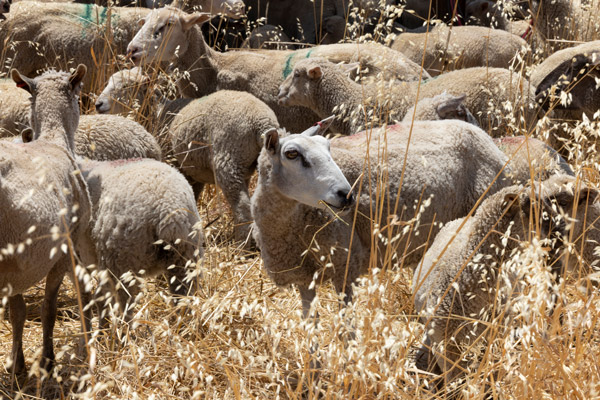
Employing sheep to manage vegetation is a relatively new idea for some residential and commercial landowners and municipalities. Though the practice is catching on, so-called targeted grazing remains a niche segment of the sheep business.
Traditional sheep ranchers earn most of their money selling live lambs to packers such as Superior Farms in Dixon. Packinghouses then process the lambs and sell the meat to retailers and restaurants.
Wool remains a source of revenue for sheep operators, but the fiber is “not worth much anymore these days,” says rancher Ryan Indart. With the advent and rise of synthetic fibers, shearing sheep is now more for animal health reasons. Overgrown wool can impede the sheep’s movement and sight and lead to overheating in the summertime and risk of parasitic infestations and disease.
Another occasional enterprise is grazing the plant stubble of crops such as wheat or barley after harvest. Not only do the ruminants clean the field of the crop residue and any weeds, but their manure helps fertilize the soil.

